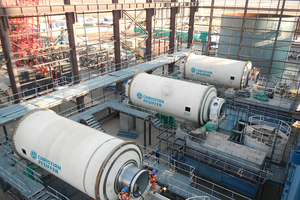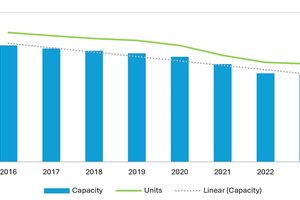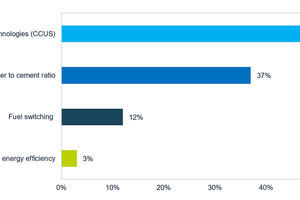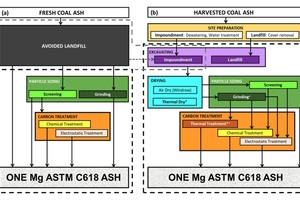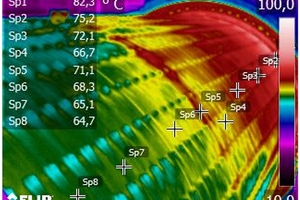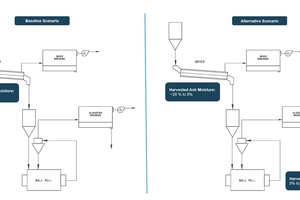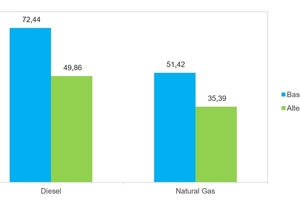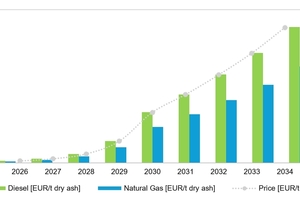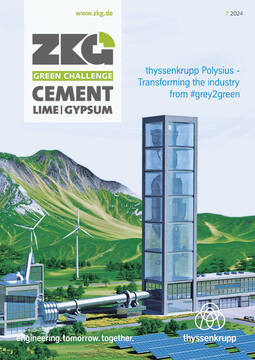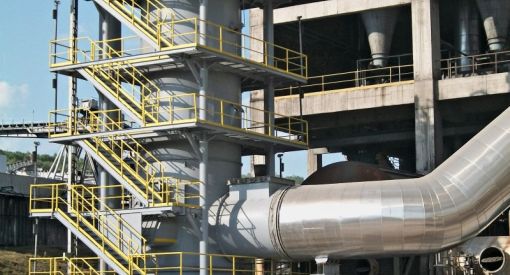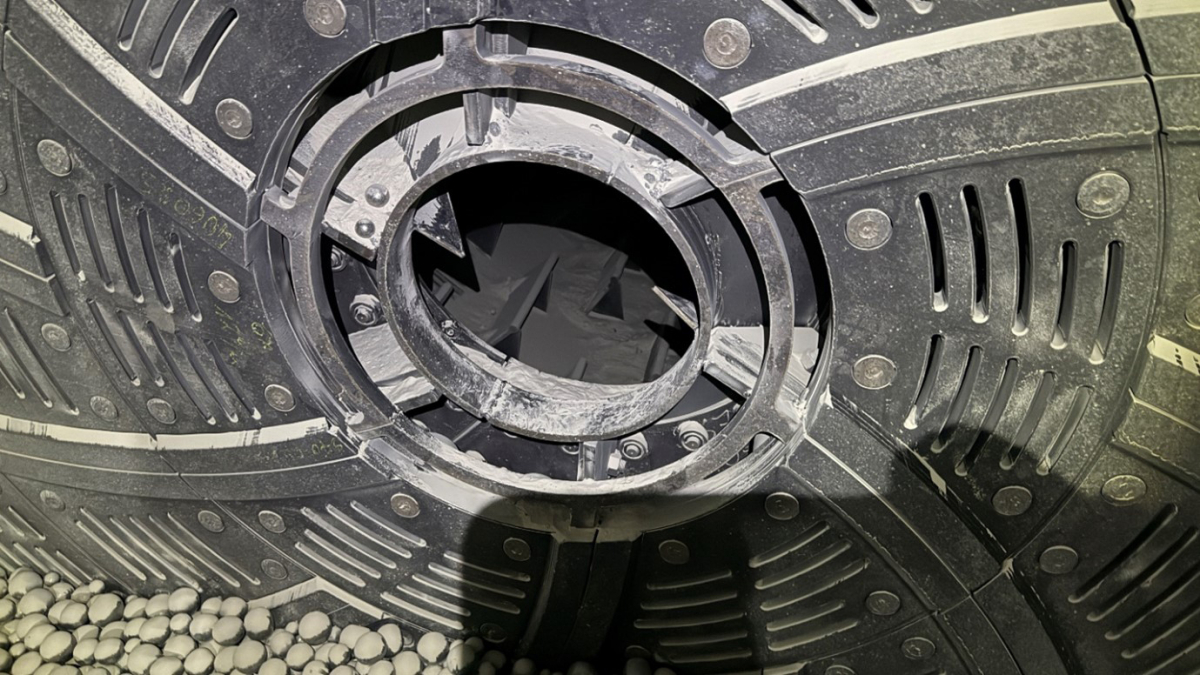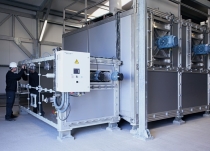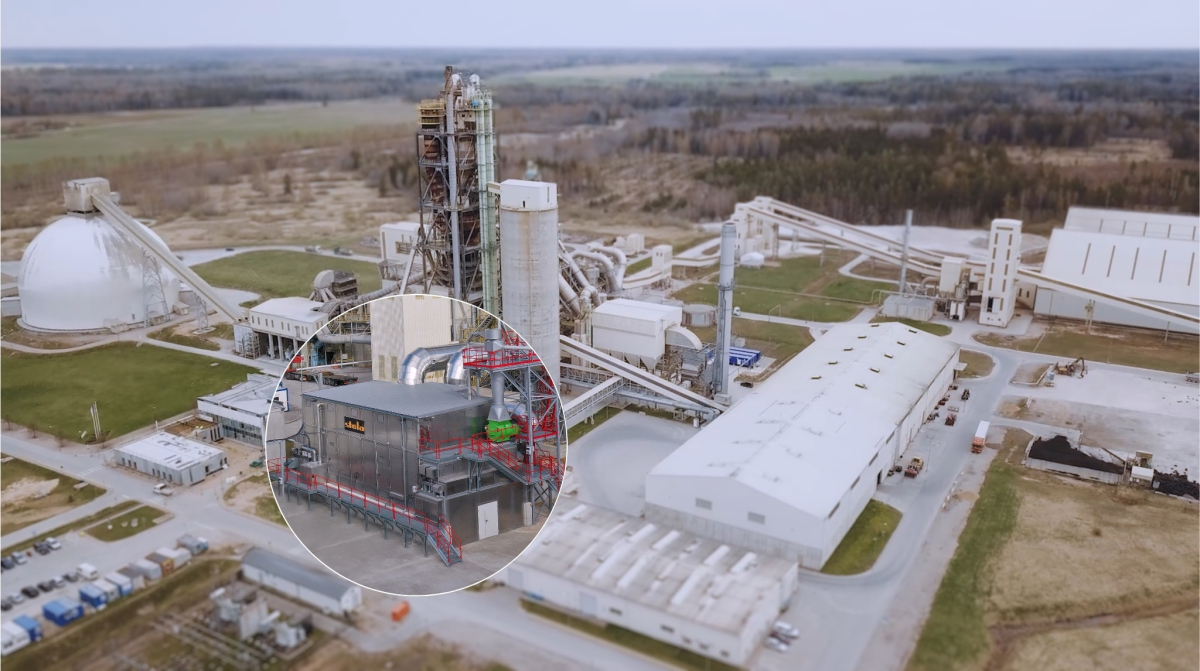Coal ash in global cement production: Optimizing grinding processes for environmental and economic benefits
In the global push towards net-zero emissions, optimizing the use of coal combustion residuals (CCR) is crucial. Repurposing coal ash, a byproduct of thermal power plants, within the cement industry offers both environmental and economic benefits. The grinding process of this byproduct, particularly in ball mills, generates significant heat, traditionally seen as waste. However, this heat can be harnessed to reduce energy consumption and CO2 emissions during the drying process. These reductions of fossil fuels consumption in the drying process of coal ash not only contribute to sustainability but also offer potential monetary savings through lower carbon emissions.
Context
It is widely acknowledged that thermal power plants are expected to be phased out worldwide within the next 50 years as part of the global push towards net-zero emissions. In Europe, for example, half of the coal power plants have already announced plans to shut down by 2030. As it is shown in Figure 1, between 2016 and 2023, the continent saw a 25% reduction in thermal power plant capacity, following a linear trend [1].
Most European countries have set targets to completely phase out fossil fuels by 2030. However, some member states, including Germany, the Czech Republic, Montenegro, Romania, Bulgaria, Croatia, and Slovenia, have set similar targets but aim to achieve them between 2030 and 2040 [2]. On the other side of the Atlantic, the trend is the same, the U.S. federal government has been tasked with leveraging its scale and purchasing power to achieve key objectives, including securing 100% carbon pollution-free electricity by 2030 [3].
While it is encouraging that these policies are being taken seriously — given that reducing reliance on fossil fuel power plants is essential for combating climate change — it is important to consider what actions should be taken during the 15-year window in which coal will continue to be used as a fuel for power plants. During this transitional phase, it remains crucial to develop and implement sustainable processes that will support the shift toward a fully sustainable future and reduce the environmental impacts of thermal power plants.
One significant environmental impact of thermal power plants — besides the well-known CO2 emissions — is the generation of byproducts called coal combustion residuals (CCR). In India, improper disposal of fly ash continues to jeopardize public health and agricultural activities due to water contamination [4, 5] and in the US the 2008 Kingston Coal Ash Spill and the 2014 Dan River Ash Spill resulted in severe environmental damage with long-term effects.
Given the harmful effects of these byproducts, the disposal and storage of CCRs is being increasingly regulated, for instance in the US the EPA’s Coal Ash Rule regulates storage in landfills and impoundments of coal ash. This is a necessary step especially for coal ash which contains hazardous substances such as heavy metals (e.g., mercury, arsenic, and lead).
Even if coal power plants are phased out by 2040, environmental issues from coal waste, like landfills and storage sites, will last for decades. For instance, under the EPA’s Coal Ash Rule, about half of the waste sites were exempt because they weren’t considered active in 2015, leaving some older sites unregulated. From 2024, the EPA has declared that full cleanup is needed, and these sites will require long-term management, cleanup, monitoring, and exploring ways to recycle or reuse the waste.
The good news is that the cement and concrete industry provides a sustainable solution by repurposing coal ash. Both fresh ash directly translated from thermal plants and harvested ash from landfills and impoundments can be effectively utilized within the industry. At the same time both fly ash and bottom ash can be utilized as fly ash serves as a supplementary cementitious material (SCM) in cement, while bottom ash can be used as a road base and subbase aggregate, structural fill material, and on some occasions as SCM just as fly ash [6].
This trend is gaining momentum. In the US, by 2022, 60% of all fly ash was reutilized, compared to 40% of bottom ash. In average the utilization rate of coal combustion products (CCPs) has grown 25% since 1991 [7]. Simultaneously, the worldwide average of the utilization rate of CCPs demonstrates that around 64% of the CCPs produced are used in the world (Table 1). The purpose of these materials in China, India and the US are all mainly related to the cement and concrete production [8].
The use of fresh ash or harvested ash reduces the lifecycle emissions of cement production while also mitigating the historical negative environmental impact of coal ash.
Enviromental benefits of coal ash in the construction industry
In the context of a decarbonization roadmap for achieving the 2DS scenario in the cement industry, incorporating fresh or harvested ash helps substitute raw materials and reduce the clinker factor. This approach supports the decarbonization lever of reducing the clinker-to-cement ratio, which the IEA, as shown in Figure 2, identifies as contributing 37% of the reductions needed to achieve the 2 °C Scenario.
The use of coal ash, whether fresh or harvested, as a replacement for Portland cement in concrete offers significant environmental benefits. While there is a spectrum of impact based on the source and processing level of the ash, even the worst-case scenario still provides considerable advantages over using Portland cement alone [10]. Like shown in FIgure 3, harvested ashes generally have slightly higher LCA impacts than fresh ash, primarily due to the additional drying requirements and excavation processes.
Since drying has a significant impact on the lifecycle of harvested ash, which is typically sourced from landfills and impoundments, it is crucial to reduce energy consumption in the drying process to benefit from this material efficiently. This reduction of energy consumption in the drying process can be achieved by leveraging the heat generated within the ball mill during the grinding process.
As Christian Pfeiffer, we prioritize efficient processes within the industry. In this article, we explore the optimization of ball mill circuits for processing harvested coal ash. By leveraging the heat generated during the grinding process, we can reduce the need for drying, thereby decreasing fossil fuel consumption and CO2 emissions, ultimately leading to cost savings.
Efficient drying and grinding of ground ash
Ashes excavated from landfills and impoundments generally require thermal drying to meet the moisture content requirements [11]. The extent of thermal drying necessary varies depending on the initial water content, with landfill ash typically containing around 15% moisture and impoundment ash less than 20% [10].
After drying, grinding is necessary to achieve the required fineness according to local standards. This is particularly important if the ash contains larger particles, is mixed with bottom ash, or if bottom ash is being processed to create a supplementary cementitious material (SCM), as finely ground coal bottom ash is known to exhibit good pozzolanic properties [12].
The grinding process, particularly when utilizing equipment such as ball mills, plays a critical role in the cases mentioned before. A notable characteristic of this process is its inherent generation of heat. According to the heat balance study conducted by Christian Pfeiffer under regulated conditions, approximately 80% of the energy consumed by the mill is dissipated as heat. Traditionally, this heat is considered “heat loss”.
However, the perspective in this case shifts towards leveraging this heat to conserve energy and reduce fossil fuel consumption in the drying process by integrating it directly within the ball mill. Drying can be partially undertaken by the ball mill, thus saving fuel and reducing inherent emissions. Financially, the savings from reduced fossil fuel use and avoided carbon emissions - due to carbon markets - offer significant economic benefits to the customer.
Scenario analysis: Efficient drying and grinding of ground ash
A client that processes coal ash for various applications, including those in the cement and construction sectors, aims to enhance the efficiency of their process. The drying process, assumed and simulated using natural gas and diesel, is particularly energy-intensive, presenting a significant opportunity for CO2 reduction and cost savings. The raw material begins with a moisture content of 20%, which must be reduced to 0,05%.
Two scenarios are evaluated:
Baseline Scenario: Moisture is completely reduced during the drying process, with no further reduction required in the ball mill.
Alternative Scenario: Moisture is reduced from 20% to 5% in the dryer, with the final 4.95% moisture reduction achieved in the ball mill.
The study reveals a CO2 reduction of 31,2% for both fuels. In terms of specific emissions, this translates to a reduction of 22.58 kg of CO2 per t of dry product for the diesel scenario and 16.03 kg of CO2 per t of dry product for the natural gas scenario (Figure 6).
This study is intended solely for estimation and should not be interpreted as a definitive analysis.
The savings from the reduction in fossil fuel usage can be calculated based on the current prices of those fuels. Nonetheless, an additional, significant financial advantage arises when forecasting considering the global carbon markets, where the reduction in CO2 emissions can translate into substantial monetary savings. For instance, in the European Union, the EU Emissions Trading System (EU ETS) is a regional carbon market that is expected to become increasingly influential in the coming years. This is particularly relevant as free allocations — permits granted at no cost to certain sectors — will be gradually phased out from 2026 to 2034 and carbon prices will be increasing [14]. The cement industry is among the sectors affected by this change, making CO2 reduction efforts even more financially advantageous.
BloombergNEF’s (BNEF) forecast predicts that carbon prices will increase from €65/t of CO2 in 2024 to €194/t by 2035, driven by the expectation of stricter climate policies and stronger commitments from governments and industries to reduce emissions. Additionally, according to EU ETS projections, the phase-out of free permits will decrease from 97.5% for industries to 0% by 2034. This provides a foundation to estimate the potential savings if a project, like the one in the case study, begins in 2026.
As carbon prices rise and free permits are phased out, the potential savings from carbon pricing will increase substantially by 2035. For instance, as visible in Figure 7, when using diesel fuel, savings are expected to grow from €0.05/t of dry material in 2026 to €3.99/t of dry material by 2035. Taking early action to adopt low-carbon technologies and optimize energy use can reduce operational costs over time.
This analysis can also be extended to other carbon markets, such as California Cap-and-Trade, Washington CCA, or Massachusetts ETS in the U.S., as well as the China ETS or the Australian Safeguard Mechanism. Given that most of these carbon markets are trending towards phasing out free permits and increasing prices, the potential financial benefits are significant across these regions.
Conclusion
Optimizing the use of coal ash, particularly through efficient grinding processes, represents a significant opportunity to reduce both energy consumption and CO2 emissions in the cement industry. By leveraging the inherent heat generated during grinding, the process not only becomes more sustainable but also offers substantial economic benefit while using harvested coal ash which is a byproduct that should be repurposed to reduce the environmental impacts of landfills. The potential savings from reduced fossil fuel use and participation in global carbon markets, especially as carbon prices rise, further enhance the value of this approach. Thus, integrating such processes is a critical step towards achieving net-zero emissions and fostering a more sustainable future in the cement industry.
Cement_RM_Summary.pdf
(Report No. 3002024165). Retrieved August 27, 2024, from https://www.epri.com/research/products/
000000003002024165
specifications, shortcomings, and solutions. ACI Materials Journal, 118(1), 43-52. https://doi.org/10.14359/51725994

